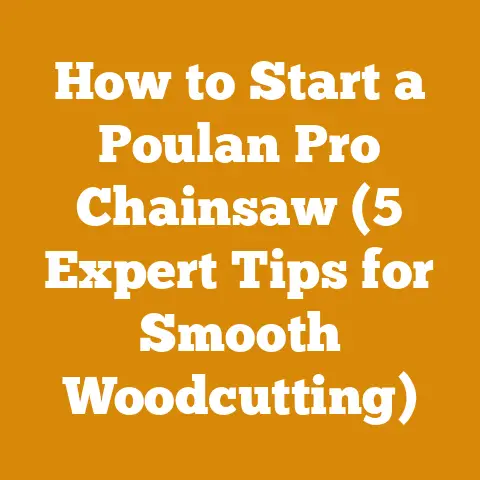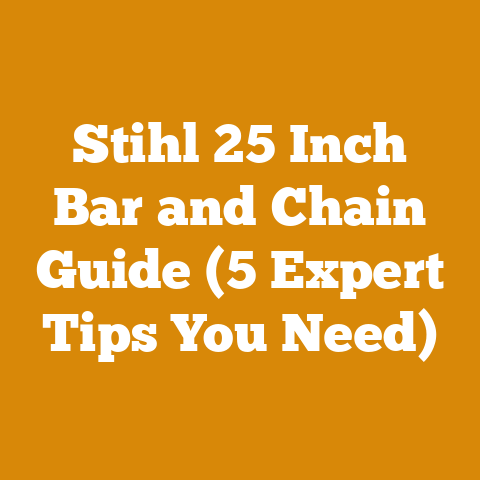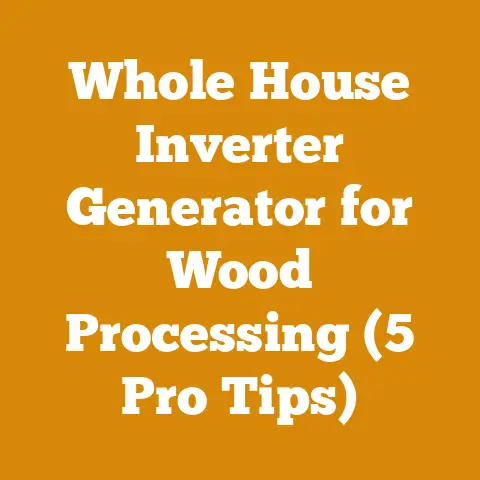Stump Grinding Machines for Beginners (Top Picks for Tree Pros)
Alright, let’s dive into the world of stump grinding! I always say, removing a stump is like finally taking out that one Christmas tree that’s been lingering in your living room since last December – a huge relief! But unlike hauling out a dried-up tree, stump grinding requires some serious machinery. So, let’s get down to business and explore stump grinding machines for beginners (and even some tree pros!).
Stump Grinding Machines for Beginners (Top Picks for Tree Pros)
So, you’ve got a stump – or maybe a whole yard full of them. Whether you’re a seasoned tree professional or a homeowner tackling a weekend project, choosing the right stump grinder can be the difference between a smooth operation and a frustrating headache. I’ve spent years dealing with these stubborn remnants of trees, and I’m here to share my insights on selecting the best stump grinding machine for your needs.
What is Stump Grinding Anyway?
Before we dive into the machines, let’s make sure we’re all on the same page. Stump grinding is the process of using a specialized machine to grind down a tree stump into small wood chips. These chips can then be used as mulch, compost, or simply backfilled into the hole. The goal is to remove the visible part of the stump and, ideally, grind down below ground level to prevent regrowth and allow for replanting or landscaping.
I remember one time I was helping a friend clear his property. He tried everything – pulling, digging, even attaching a chain to his truck (don’t do that!). After hours of struggling, he finally admitted defeat and called me. A few hours with a decent stump grinder, and the stump was gone, leaving him wondering why he hadn’t called me sooner.
Why Grind Stumps?
You might be thinking, “Why not just leave the stump?” Well, there are several compelling reasons to grind stumps:
- Aesthetics: Stumps are unsightly and can detract from the beauty of your property.
- Safety: Stumps can be tripping hazards, especially for children and the elderly.
- Pest Control: Stumps can attract insects like termites and ants, which can then spread to your home.
- Regrowth: Some trees will send up new shoots from the stump, creating unwanted saplings.
- Land Use: Stumps take up valuable space that could be used for planting, building, or other landscaping projects.
Types of Stump Grinding Machines
Stump grinders come in various shapes and sizes, each designed for different applications. Understanding the different types is crucial for choosing the right machine for your needs.
1. Walk-Behind Stump Grinders
These are the most common type of stump grinders, especially for homeowners and smaller landscaping businesses. They are relatively compact and easy to maneuver, making them ideal for tight spaces and residential properties.
- Pros:
- Relatively affordable
- Easy to transport
- Good for small to medium-sized stumps
- User-friendly
- Cons:
- Less powerful than other types
- Can be tiring to operate for extended periods
- May struggle with large or particularly hard stumps
I’ve used walk-behind grinders for years, and they’re great for most residential jobs. I once tackled a row of old apple tree stumps with one, and it made quick work of them. The key is to take your time and let the machine do the work.
2. Self-Propelled Stump Grinders
These are similar to walk-behind grinders but have the added benefit of being self-propelled. This means they have their own engine that drives the wheels, making them easier to maneuver, especially on uneven terrain.
- Pros:
- Easier to maneuver than walk-behind models
- Less tiring to operate
- Good for larger properties and more challenging terrain
- Cons:
- More expensive than walk-behind models
- Still limited in power compared to larger machines
If you’re dealing with a lot of stumps or have a property with hills or rough terrain, a self-propelled grinder is a worthwhile investment. I remember using one on a property with a steep slope, and it saved me a ton of energy.
3. Tow-Behind Stump Grinders
These grinders are designed to be towed behind a truck or other vehicle. They are typically more powerful than walk-behind or self-propelled models and are suitable for larger stumps and commercial applications.
- Pros:
- More powerful than walk-behind and self-propelled models
- Good for large stumps and commercial use
- Can be transported easily with a truck or trailer
- Cons:
- More expensive than smaller models
- Require a vehicle with a tow hitch
- Can be difficult to maneuver in tight spaces
I’ve used tow-behind grinders on larger land clearing projects, and they’re real workhorses. They can handle stumps that would be impossible for smaller machines.
4. Hydraulic Stump Grinders
These are the most powerful type of stump grinders, typically mounted on a skid steer or excavator. They are used for large-scale land clearing and commercial operations.
- Pros:
- Extremely powerful
- Can handle the largest stumps and the toughest conditions
- Highly efficient
- Cons:
- Very expensive
- Require specialized equipment (skid steer or excavator)
- Not suitable for residential use
Hydraulic grinders are the heavy hitters of the stump grinding world. I’ve seen them used to clear entire forests, grinding stumps the size of cars.
5. Handheld Stump Grinders
These are small, lightweight grinders designed for small stumps and roots. They are not as powerful as other types but can be useful for detail work and hard-to-reach areas.
- Pros:
- Lightweight and easy to maneuver
- Good for small stumps and roots
- Affordable
- Cons:
- Not very powerful
- Limited to small stumps
- Can be tiring to operate
I’ve used handheld grinders for cleaning up small roots and grinding down the edges of stumps after using a larger machine. They’re handy for those finishing touches.
Key Features to Consider
When choosing a stump grinding machine, there are several key features to consider:
1. Engine Power
The engine power is a critical factor in determining the machine’s ability to grind stumps effectively. More powerful engines can handle larger and harder stumps more easily.
- For small stumps (under 6 inches in diameter): 13-16 HP engine
- For medium stumps (6-12 inches in diameter): 16-20 HP engine
- For large stumps (over 12 inches in diameter): 20+ HP engine
I’ve found that it’s always better to err on the side of more power. You can always throttle down a more powerful machine, but you can’t magically add power to a weaker one.
2. Cutting Depth
The cutting depth determines how far below ground level the machine can grind. A deeper cutting depth is important for preventing regrowth and allowing for replanting.
- Minimum cutting depth: 6 inches below ground level
- Ideal cutting depth: 12 inches below ground level
I always aim for at least 12 inches below ground level to ensure that the stump is completely removed and won’t cause any future problems.
3. Cutting Wheel Diameter
The cutting wheel diameter affects the speed and efficiency of the grinding process. Larger wheels can grind faster and handle larger stumps more easily.
- Small wheels (under 12 inches): Good for small stumps and tight spaces
- Medium wheels (12-16 inches): Good for most residential applications
- Large wheels (over 16 inches): Good for large stumps and commercial use
4. Tooth Design and Material
The design and material of the cutting teeth are crucial for the performance and longevity of the machine. Carbide-tipped teeth are the most durable and effective for grinding stumps.
- Carbide-tipped teeth: The best option for durability and performance
- Number of teeth: More teeth generally result in faster grinding
- Tooth replacement: Easy tooth replacement is essential for maintenance
I always recommend carbide-tipped teeth. They last much longer than other types and can handle even the toughest stumps.
5. Maneuverability
Maneuverability is especially important for walk-behind and self-propelled grinders. Consider the size and weight of the machine, as well as the type of terrain you’ll be working on.
- Weight: Lighter machines are easier to maneuver, but heavier machines may be more stable.
- Wheel size: Larger wheels can handle rough terrain more easily.
- Steering: Consider models with power steering or differential locks for improved maneuverability.
6. Safety Features
Safety should always be a top priority when operating a stump grinder. Look for machines with safety features such as:
- Emergency stop switch: Allows you to quickly shut down the machine in case of an emergency.
- Shields and guards: Protect you from flying debris.
- Operator presence control: Stops the machine if you release the handle.
I always wear safety glasses, hearing protection, and gloves when operating a stump grinder. It’s also a good idea to wear long pants and a long-sleeved shirt to protect your skin from flying debris.
7. Price and Budget
Stump grinders can range in price from a few hundred dollars for a small handheld model to tens of thousands of dollars for a large hydraulic machine. Consider your budget and the frequency with which you’ll be using the machine when making your decision.
- Homeowners: A walk-behind or self-propelled grinder is usually the best option.
- Landscaping businesses: A tow-behind or hydraulic grinder may be necessary for larger jobs.
Top Picks for Tree Pros and Beginners
Now that we’ve covered the basics, let’s take a look at some of my top picks for stump grinding machines:
1. NorthStar Walk-Behind Stump Grinder – Best Overall for Beginners
- Engine: 420cc 15 HP Engine
- Cutting Depth: 12 in. Below Grade
- Cutting Wheel Diameter: 13.75in.
- Pros: Powerful engine, durable construction, easy to use.
- Cons: Can be tiring to operate for extended periods.
- Why I like it: This is a great all-around machine for homeowners and small landscaping businesses. It’s powerful enough to handle most residential stumps and is relatively easy to maneuver. I’ve used this model on several occasions and have always been impressed with its performance.
2. Toro STX-26 Stump Grinder – Best Self-Propelled Grinder
- Engine: 25 HP Kawasaki Engine
- Cutting Depth: 12.5 in. Below Grade
- Cutting Wheel Diameter: 19 in.
- Pros: Self-propelled, powerful engine, easy to maneuver.
- Cons: More expensive than walk-behind models.
- Why I like it: This is a top-of-the-line self-propelled grinder that is perfect for larger properties and more challenging terrain. The self-propelled feature makes it much easier to operate, and the powerful engine can handle even the toughest stumps.
3. DK2 Power 14 HP Gas Powered Walk Behind Stump Grinder – Best Value
- Engine: 420cc 14 HP Engine
- Cutting Depth: 8 in. Below Grade
- Cutting Wheel Diameter: 12 in.
- Pros: Affordable, compact, easy to use.
- Cons: Less powerful than other models, limited cutting depth.
- Why I like it: This is a great option for homeowners on a budget. It’s not as powerful as some of the other models, but it’s still capable of grinding small to medium-sized stumps. It’s also very compact and easy to store.
4. Bluebird SG1314B Stump Grinder – Best for Smaller Stumps
- Engine: 13 HP Honda Engine
- Cutting Depth: 9 in. Below Grade
- Cutting Wheel Diameter: 13 in.
- Pros: Easy to maneuver, reliable Honda engine, good for small to medium stumps.
- Cons: Less powerful than larger models, may struggle with very hard wood.
- Why I like it: The Bluebird SG1314B is a reliable choice for tackling smaller stumps in residential areas. Its compact design makes it easy to transport and maneuver in tight spaces. The Honda engine provides dependable power, and the overall build quality is excellent. It’s a great option for homeowners and small landscaping businesses that need a dependable machine for occasional use.
5. Rayco RG27 Tracked Stump Grinder – Best for Professionals
- Engine: 26.5 HP Kohler Engine
- Cutting Depth: 13 in. Below Grade
- Cutting Wheel Diameter: 18 in.
- Pros: Tracked design for excellent traction, powerful engine, durable construction.
- Cons: Expensive, requires specialized training to operate.
- Why I like it: This is a professional-grade stump grinder that is designed for the most demanding jobs. The tracked design provides excellent traction on any terrain, and the powerful engine can handle even the largest stumps. It’s a great investment for tree service companies and other professionals who need a reliable and efficient machine.
Stump Grinding Safety Tips
Stump grinding can be a dangerous task if not done properly. Here are some safety tips to keep in mind:
- Read the owner’s manual: Before operating any stump grinder, read the owner’s manual carefully and understand all of the safety precautions.
- Wear appropriate safety gear: Always wear safety glasses, hearing protection, gloves, long pants, and a long-sleeved shirt.
- Clear the area: Remove any rocks, debris, or other obstacles from the area around the stump.
- Keep bystanders away: Keep children, pets, and other bystanders away from the work area.
- Inspect the machine: Before each use, inspect the machine for any damage or wear.
- Start slowly: Start the machine slowly and gradually increase the speed as needed.
- Avoid overreaching: Don’t overreach or stand in front of the cutting wheel.
- Be aware of underground utilities: Before grinding, call your local utility companies to locate any underground lines.
- Take breaks: Stump grinding can be tiring, so take breaks as needed to avoid fatigue.
- Never operate under the influence: Never operate a stump grinder under the influence of drugs or alcohol.
I once saw a guy try to grind a stump while wearing sandals. Needless to say, it didn’t end well. Always wear proper safety gear!
Step-by-Step Guide to Stump Grinding
Here’s a step-by-step guide to grinding a stump:
- Clear the area: Remove any rocks, debris, or other obstacles from the area around the stump.
- Position the machine: Position the stump grinder so that the cutting wheel is directly over the stump.
- Start the engine: Start the engine and allow it to warm up.
- Engage the cutting wheel: Engage the cutting wheel and slowly lower it onto the stump.
- Grind the stump: Move the cutting wheel back and forth across the stump, grinding it down in layers.
- Grind below ground level: Once you’ve ground the stump down to ground level, continue grinding below ground level to prevent regrowth.
- Remove the chips: Remove the wood chips from the hole and dispose of them properly.
- Backfill the hole: Backfill the hole with soil and compact it.
I like to grind the stump in a circular motion, gradually working my way from the outside in. This helps to prevent the cutting wheel from getting stuck.
Maintenance Tips for Stump Grinding Machines
Proper maintenance is essential for keeping your stump grinder in good working condition. Here are some maintenance tips:
- Check the oil: Check the engine oil level regularly and add oil as needed.
- Change the oil: Change the engine oil according to the manufacturer’s recommendations.
- Clean the air filter: Clean the air filter regularly to prevent dirt and debris from entering the engine.
- Sharpen the teeth: Sharpen the cutting teeth regularly to maintain optimal performance.
- Replace the teeth: Replace the cutting teeth when they become worn or damaged.
- Grease the bearings: Grease the bearings regularly to keep them lubricated.
- Check the belts: Check the belts for wear and tear and replace them as needed.
- Store the machine properly: Store the machine in a dry, covered area when not in use.
I always keep a maintenance log for my stump grinder. This helps me keep track of when I need to perform maintenance tasks.
Renting vs. Buying a Stump Grinder
If you only need to grind a few stumps, renting a stump grinder may be the best option. However, if you plan to use a stump grinder frequently, buying one may be more cost-effective in the long run.
- Renting:
- Lower upfront cost
- No maintenance required
- Limited availability
- Buying:
- Higher upfront cost
- Requires maintenance
- Always available when you need it
I usually recommend renting a stump grinder for occasional use and buying one for frequent use.
Disposing of Stump Grindings
Once you’ve ground the stump, you’ll need to dispose of the wood chips. Here are some options:
- Use as mulch: Wood chips make excellent mulch for gardens and flower beds.
- Use as compost: Wood chips can be added to your compost pile.
- Backfill the hole: You can use the wood chips to backfill the hole after grinding the stump.
- Dispose of them: If you don’t want to use the wood chips, you can dispose of them at a local landfill or recycling center.
I often use wood chips as mulch in my garden. They help to retain moisture and suppress weeds.
Common Mistakes to Avoid
Here are some common mistakes to avoid when stump grinding:
- Not wearing safety gear: Always wear appropriate safety gear.
- Not clearing the area: Remove any rocks, debris, or other obstacles from the area around the stump.
- Starting too fast: Start the machine slowly and gradually increase the speed as needed.
- Overreaching: Don’t overreach or stand in front of the cutting wheel.
- Ignoring underground utilities: Before grinding, call your local utility companies to locate any underground lines.
- Not maintaining the machine: Perform regular maintenance to keep your stump grinder in good working condition.
I once saw someone try to grind a stump without clearing the area first. The cutting wheel hit a rock and sent it flying, narrowly missing a bystander. Always clear the area!
The Future of Stump Grinding
The future of stump grinding is likely to involve more automation and technology. We may see the development of robotic stump grinders that can operate autonomously, as well as machines that use sensors and GPS to optimize the grinding process.
I’m excited to see what the future holds for stump grinding. I think there’s a lot of potential for innovation in this field.
Conclusion
Choosing the right stump grinding machine is essential for a successful and safe stump removal project. By considering the type of stumps you’ll be grinding, the features you need, and your budget, you can find the perfect machine for your needs. And remember, always prioritize safety and follow the manufacturer’s instructions.






